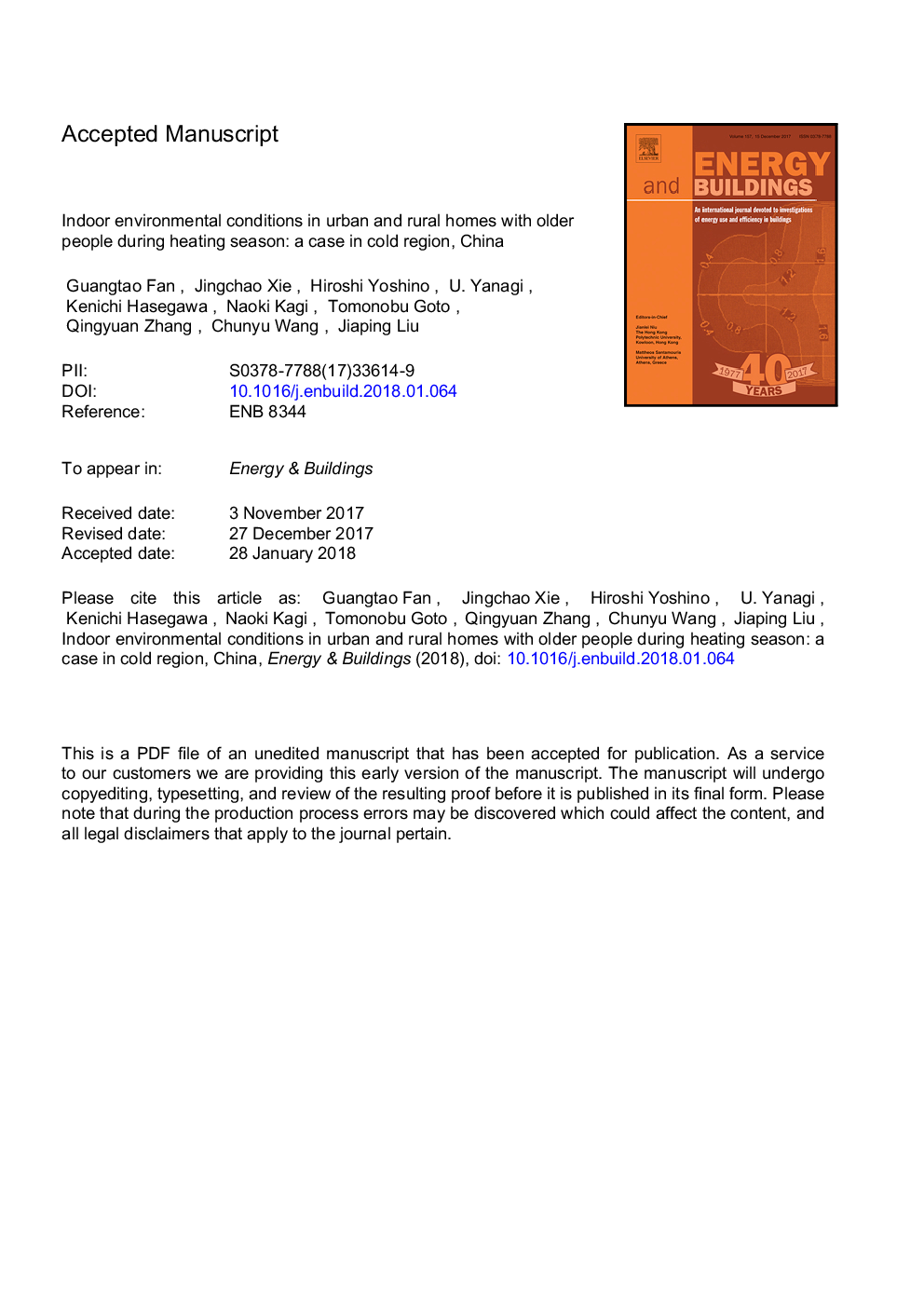| Article ID | Journal | Published Year | Pages | File Type |
|---|---|---|---|---|
| 6728419 | Energy and Buildings | 2018 | 40 Pages |
Abstract
China's aging population is growing rapidly. To date, there have been few literatures concerning indoor environment of private houses with older people. This study fully investigated indoor environment in 10 houses (5 urban and 5 rural houses) with older people during heating season in Beijing, China. Each house was assessed for temperature, relative humidity, CO2, PM2.5, CO, NOx, formaldehydes, acetaldehyde, VOCs, SVOCs and fungi. Results indicated older people in urban houses experienced a steadier and warmer thermal environment than those in rural houses, due to the difference of heating devices between urban and rural houses. Indoor CO2 levels mainly increased up to 1000â¯ppm in the bedroom during sleeping time. For rural houses, indoor fuel combustion contributed to an extremely high PM2.5 and CO level. Formaldehyde, acetaldehyde, toluene, ethylbenzene and xylenes levels in most houses were lower than the limit values. However, the integrated influence of these compounds was unnegligible. TVOC concentrations in four measured houses exceeded the reference value of 600â¯Âµg/m3. The most frequent fungi was Cladosporium spp. (90%), followed by Penicillium spp. (70%) and Aspergillus spp. (60%). The fungal levels in rural houses were higher than urban houses. These results will be beneficial to improve housing environmental quality for older people in China.
Related Topics
Physical Sciences and Engineering
Energy
Renewable Energy, Sustainability and the Environment
Authors
Guangtao Fan, Jingchao Xie, Hiroshi Yoshino, U. Yanagi, Kenichi Hasegawa, Naoki Kagi, Tomonobu Goto, Qingyuan Zhang, Chunyu Wang, Jiaping Liu,
